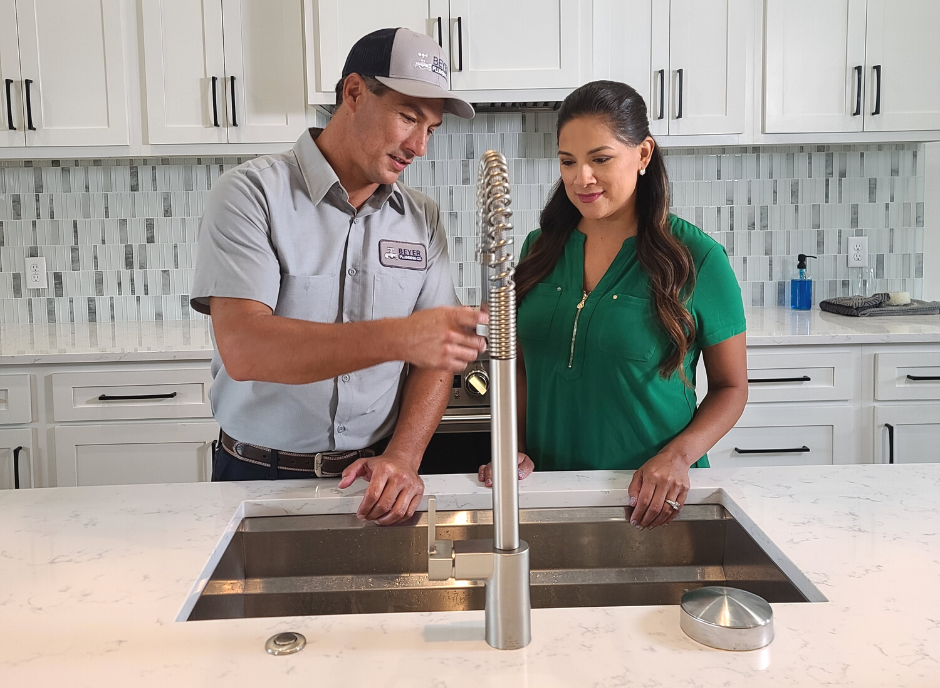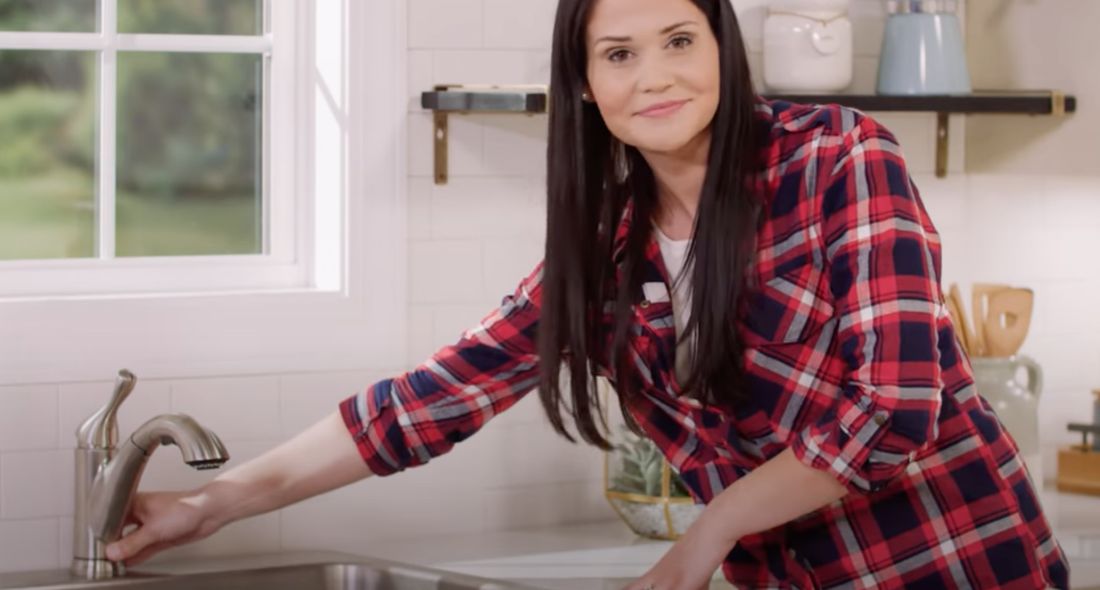When It's Important to Resolve a Malfunctioning Faucet
When It's Important to Resolve a Malfunctioning Faucet
Blog Article
Were you looking for additional info involving Why Is It Important To Fix Your Leaking Tap/Faucet??

Leaking taps could look like a small aggravation, however their effect exceeds just the nuisance of the noise. From drainage to incurring unnecessary monetary expenses and health and wellness dangers, ignoring a trickling tap can result in various repercussions. In this post, we'll look into why it's crucial to address this common household concern without delay and properly.
Waste of Water
Ecological Impact
Trickling faucets add dramatically to water waste. According to the Environmental Protection Agency (EPA), a single tap leaking at one drip per second can lose more than 3,000 gallons of water annually. This not only stress water resources but additionally impacts ecosystems and wildlife depending on them.
Step-by-Step Overview to Taking Care Of a Dripping Tap
Tools Needed
Before trying to take care of a trickling tap, collect the needed tools, including an adjustable wrench, screwdrivers, substitute parts (such as washing machines or cartridges), and plumber's tape.
Usual Tap Issues and Their Solutions
Recognize the type of tap and the particular issue triggering the drip. Usual problems include worn-out washers, rusty valve seats, or malfunctioning O-rings. Describe producer guidelines or online tutorials for detailed assistance on repairs.
Financial Prices
Boosted Water Expenses
Past the ecological impact, leaking faucets can inflate water costs considerably. The accumulated wastefulness in time equates into higher energy expenses, which can have been avoided with prompt fixings.
Potential Residential Property Damage
Moreover, long term leaking can lead to damage to fixtures and surfaces surrounding the faucet. Water buildup can cause discoloration, rust, and even structural concerns if left ignored, leading to additional repair service costs.
Health and wellness Issues
Mold and Mold Development
The consistent presence of wetness from a trickling faucet develops an optimal atmosphere for mold and mildew development. These fungis not just compromise indoor air quality yet additionally present wellness dangers, specifically for people with breathing problems or allergies.
Waterborne Conditions
Stagnant water in dripping faucets can become a breeding ground for germs and other virus, boosting the threat of waterborne conditions. Pollutants such as Legionella microorganisms grow in stagnant water, possibly causing major health problems when consumed or inhaled.
Do it yourself vs. Expert Fixing
Pros and Cons of Do It Yourself Repair Service
While some may try to take care of a trickling faucet themselves, do it yourself repair services feature their very own collection of difficulties. Without correct knowledge and devices, DIY efforts can exacerbate the issue or cause insufficient repairs, lengthening the issue.
Advantages of Hiring a Professional Plumber
Employing a professional plumber makes certain that the underlying source of the trickling tap is attended to effectively. Plumbings possess the experience and equipment to identify and fix tap concerns efficiently, conserving time and minimizing the threat of more damages.
Ecological Duty
Individual Contribution to Conservation
Taking responsibility for repairing trickling taps lines up with more comprehensive efforts toward water conservation and ecological sustainability. Every individual's activities collectively make a substantial influence on protecting precious sources.
Sustainable Living Practices
By prioritizing prompt repairs and taking on water-saving behaviors, people add to sustainable living practices that benefit both present and future generations.
Safety nets
Regular Maintenance Tips
To prevent dripping faucets, carry out routine upkeep such as cleaning up aerators, examining for leakages, and changing worn-out parts without delay. In addition, consider setting up water-saving gadgets or updating to extra effective components.
Importance of Prompt Services
Addressing leaking faucets as quickly as they're discovered protects against further water wastage and potential damage, ultimately conserving both water and money over time.
Influence On Residential Or Commercial Property Value
Assumption of Well-Maintained Residential Or Commercial Property
Maintaining a residential or commercial property in good condition, consisting of resolving upkeep problems like leaking faucets, improves its viewed worth and charm amongst prospective customers or renters.
Impact on Resale Worth
Residences with well-maintained plumbing components, consisting of taps, command greater resale worths in the real estate market. Dealing with leaking taps can contribute to a favorable impact during residential or commercial property evaluations and negotiations.
Final thought
Dealing with a leaking faucet exceeds simple benefit; it's a crucial step towards conserving water, decreasing economic costs, and securing health and residential property. Whether via DIY repairs or specialist aid, acting to repair dripping faucets is a tiny yet impactful way to promote accountable stewardship of sources and contribute to a much healthier, extra sustainable future.
How to Fix a Leaky Faucet: Step-by-Step Repair Guide
A leaky faucet may seem like a simple annoyance, but if it's not fixed promptly, that leak could cost hundreds to potentially thousands. From water damage to mold, mildew, and high water bills, even a tiny leak can be catastrophic if left unattended. Damage like this can even affect the overall value of your home, so it's important to take the right approach for leaky faucet repair. You may need the help of a plumber in some cases, but we've got a few tips you can try on how to fix a leaky faucet before calling the pros.
Four Faucet Types
When you're learning how to fix a leaky faucet, the first step is knowing what kind of faucet you're working with! There are four common types.
Cartridge Faucets
Cartridge faucets come in one- or two-handled varieties. In one-handled cartridge faucets, hot and cold water combines in a single cartridge. In the two-handled versions, hot and cold water are controlled separately and mixed in the faucet.
Ball Faucets
Ball faucets have a single lever you push up and down to adjust the pressure and rotate to change the temperature. A slotted metal ball controls the amount of water allowed into the spout.
Compression Washer Faucets
They're the oldest type of faucet, but they're still used in many homes — especially older ones. Compression faucets have two separate handles that, when turned, raise or lower the washer that seals a water valve. This valve stops water from flowing through the faucet when it is turned off.
Disc Faucets
Disc faucets rarely need to be repaired due to their maintenance-free design. The water flow is controlled by two discs — the upper one raises and lowers against a fixed lower disc, creating a watertight seal. If your disc faucet starts leaking, you may need to replace the seals or clean residue buildup from the inlets.
Fixing a Leaky Faucet
Step 1: Turn Off the Water
Whether you're learning how to fix a leaky bathtub faucet or how to fix a leaky kitchen faucet, always turn off the water supply to your working area when you're fixing a leak. The last thing you want is a flood added to your list of things to fix.
Look for the shutoff valves below your sink or around the tub and turn them clockwise to stop the water flow. If your faucet doesn't have shutoff valves, you may need to turn off the water for the whole house. Check to make sure it's off by turning the faucet on. If nothing comes out, you're ready to start the repair.
Step 2: Take Apart the Faucet
How you disassemble your faucet depends on the type of fixture you have. You can use a flathead screwdriver to remove the caps on top of the handle or handles for cartridge and compression faucets. Inside, you should see handle screws. Unscrew these with a screwdriver to remove the handle.
Disc- and ball-style faucets will typically have an inlet screw near the handle, and removing that will reveal the interior of the faucet.
Detach the Valve Stem
For cartridge- and compression-style faucets, you'll see the inner valve stem or cartridge once you remove the faucet handles. If you have a compression faucet, unscrew the brass valve stem. If you have a cartridge faucet, pull out the cartridge. If your cartridge has been in place for a while, it may require some tools or extra force to remove it due to mineral deposits.
Examine and Replace Parts
Once you've removed the parts, check them out to confirm what needs to be replaced. You may see corroded rubber washers, O-rings, stems, or cartridges. On a ball-style faucet, check the seats and springs for damage.
If you need to repair a leaky disc faucet, check the inlet and seals on the lower disc.
Once you determine what parts must be replaced, visit your local hardware store. Bring the damaged parts with you to ensure you can purchase the correct components to replace them.
Clean Valves and Faucet Cavity
If you've removed a stem or cartridge, you may notice mineral buildup in the faucet's threads. Use white vinegar to clean the valve seat by soaking it for a few minutes, then scrub it away with a soft toothbrush and rinse with warm water. You can also clean the interior of the faucet in the same way.
Reassemble the Faucet
Once your faucet is cleaned and the required parts have been replaced, it's time to reassemble it. Put the pieces back together and slowly turn the water supply back on. Doing this slowly is crucial because too much initial water pressure can damage the new hardware you've just installed.
https://homewarranty.firstam.com/blog/how-to-fix-leaky-faucet

I am very involved in Should I Repair or Replace a Leaky Faucet? and I hope you enjoyed reading the post. Sharing is caring. Helping people is fun. Thank you for going through it.
Report this page